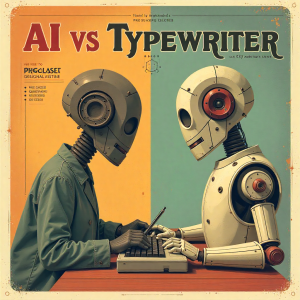Welcome to Africa’s workplace: the generational divide.
Picture this: a three-hour meeting where the HR officer is furiously scribbling every single word by hand. By the end, her wrist aches, the minutes are incomplete, and the frustration is palpable. Meanwhile, an AI tool could have recorded, transcribed, and cleaned up the entire meeting in ten minutes. But no—the pen must bleed before progress is recognised.
Across Africa’s workplace, especially in many government organisations, management is stocked with retirees—leaders in their 60s and beyond, carrying decades of experience. Meanwhile, the execution force is almost entirely young, vibrant professionals in their 20s and 30s. On paper, it looks balanced: wisdom at the top, energy at the bottom. But in practice? It’s chaos.
Africa’s workplace: Two Generations, Two Worlds

The clash is as much cultural as it is practical.
- Management: Prefers documents printed, stapled, and scrutinized word by word.
- Staff: Would rather drop a link and track edits live on Google Docs.
- Management: Believes in long, drawn-out approval chains.
- Staff: Thrives on quick pivots and instant collaboration.
- Management: Relies on strategies that worked 30 years ago.
- Staff: Knows those strategies are fossils in today’s world.
Both sides mean well. But intent without adaptation creates dysfunction.
The Cost of Old Thinking
This divide is not just a nuisance; it’s expensive.
- Progress stalls. By the time an idea travels through red tape, the trend has moved on.
- Innovation dies. Young professionals stop suggesting fresh ideas when they’re dismissed out of hand.
- Morale collapses. Frustration simmers, talent quietly updates their CVs, and turnover becomes inevitable.
- Relevance fades. In a fast-moving, tech-driven marketplace, organisations risk becoming dinosaurs.
And here’s the irony: both generations want the same thing—success. But their methods couldn’t be further apart.
Harvard business talks about it here: Read more
Can the Gap Be Bridged?

The solution is not to sideline the older generation, nor to hand over the reins blindly to the younger one. It’s a collaboration.
- Retirees bring wisdom. Their experience navigating storms can’t be dismissed.
- Younger workers bring relevance. They know the current terrain, the language, and the tools.
The magic happens when these strengths meet halfway. Some organisations experiment with reverse mentorship—younger employees teaching older leaders about AI tools, social media, and digital shortcuts. Others pair experienced executives with tech-savvy staff to co-create strategies.
It’s not about one side winning. It’s about both sides listening.
Closing Punchline
The workplace of tomorrow won’t be built on nostalgia. It won’t be written with ink pens on paper minutes. It will be co-authored across generations—on screens, in code, through shared knowledge, and yes, sometimes with the help of AI.
The question is: will today’s organisations embrace that collaboration, or will they keep bleeding ink while the world speeds past them?
Have you read: If Charlie Kirk Were Nigerian

